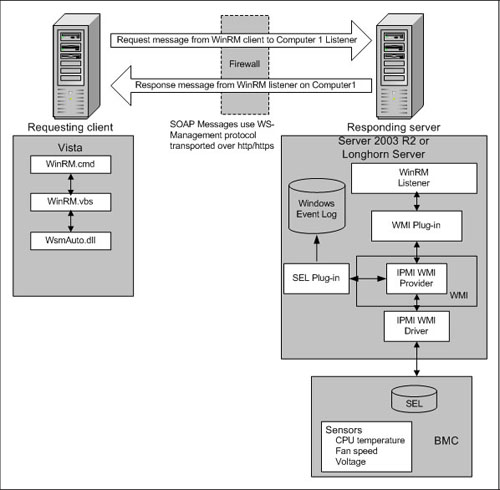Windows Remote Management (WS-Management)
...
Source Thanks, Mathevs!!
I dived into WS-Management support in Vista / Longhorn Server Windows Server 2008 this weekend. There are a couple of caveats if you want to enable remote WS-Management based access to these machines. Support for remote management is also built into Windows Server 2003 R2.
WS-Management specification allows remote access to any resource that implements the specification. Everything accessed in a WS-Management world is a resource, which is identifiable by a URI. The spec uses WS-Eventing, WS-Enumeration, WS-Transfer and SOAP 1.2 via HTTP.
Since remote management implementation in Windows acknowledges all the work done in the WMI space, you can simply issue commands in terms of URIs that incorporate WMI namespaces.

For example, the WMI class or action (method) is identified by a URI, just as any other WS-Management based resource. You can construct access to any WMI class / action using the following semantics:
- http://schemas.microsoft.com/wbem/wsman/1/wmi denotes a default WMI namespace accessible via WS-Management
- http://schemas.microsoft.com/wbem/wsman/1/wmi/root/default denotes access to root/default namespace
Since the majority of WMI classes are in root/cimv2 namespace, you should use the following URI to access those:
http://schemas.microsoft.com/wbem/wsman/1/wmi/root/cimv2



 LibreOffice
LibreOffice Firefox
Firefox
No comments:
Post a Comment